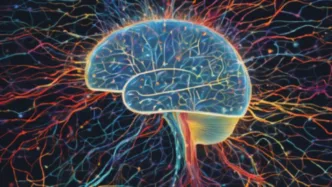The human brain is one of the most complex and fascinating organs in the body. It controls every thought, movement, and emotion, yet many of its secrets remain undiscovered. Neuroscience, the scientific study of the nervous system, is at the forefront of unlocking the mysteries of the brain.
By understanding how the brain functions, scientists and doctors can develop better treatments for neurological disorders, improve artificial intelligence, and enhance human cognitive abilities. Neuroscience impacts nearly every aspect of life, from how we learn to how we experience emotions.
In this article, we will explore the brain’s structure, how it communicates, groundbreaking discoveries in neuroscience, and the future of brain research.
Understanding the Brain’s Structure and Function
The Major Parts of the Brain
The brain is made up of several critical components, each with unique functions:
- Cerebrum: The largest part of the brain, responsible for thinking, memory, voluntary movements, and sensory processing. It is divided into two hemispheres, each controlling opposite sides of the body.
- Cerebellum: Located at the back of the brain, it controls coordination, balance, and fine motor skills. Without it, simple tasks like walking or writing would be impossible.
- Brainstem: This connects the brain to the spinal cord and regulates essential functions like breathing, heartbeat, and digestion. It ensures survival by maintaining automatic processes.
Each part of the brain works together to maintain body functions and process the world around us.
The Role of Neurons and Synapses
Neurons are the building blocks of the nervous system. These specialized cells send and receive electrical and chemical signals throughout the body. A single neuron consists of three main parts:
- Dendrites: Receive signals from other neurons.
- Axon: Sends signals away from the cell body.
- Synapse: The junction where communication between neurons occurs.
At the synapse, neurotransmitters are released, allowing neurons to send messages rapidly. This complex communication system allows the brain to process information, store memories, and control bodily functions.
Neurotransmitters: The Brain’s Chemical Messengers
Neurotransmitters play a crucial role in mood, behavior, and cognitive function. Some of the most well-known neurotransmitters include:
- Dopamine: Involved in pleasure, reward, and motivation. Imbalances are linked to addiction and Parkinson’s disease.
- Serotonin: Regulates mood, sleep, and appetite. Low levels are associated with depression and anxiety.
- Acetylcholine: Essential for learning and memory. It is linked to Alzheimer’s disease.
Neuroscience research continues to explore how manipulating neurotransmitters can help treat various neurological and psychological disorders.
The Advancements in Neuroscience
Brain Imaging Technologies
Modern technology has revolutionized neuroscience by allowing scientists to see inside the brain. Some key imaging tools include:
- MRI (Magnetic Resonance Imaging): Provides high-resolution images of brain structures.
- fMRI (Functional MRI): Measures brain activity by detecting changes in blood flow.
- CT Scans: Uses X-rays to detect injuries or abnormalities in the brain.
These tools help diagnose conditions like brain tumors, strokes, and neurodegenerative diseases.
Neuroplasticity: The Brain’s Ability to Adapt
One of the most exciting discoveries in neuroscience is neuroplasticity, the brain’s ability to reorganize itself. This means that:
- The brain can form new neural connections throughout life.
- Learning new skills strengthens neural pathways.
- After an injury, the brain can adapt to compensate for lost functions.
This concept has led to breakthroughs in rehabilitation for stroke victims and individuals with traumatic brain injuries.
The Connection Between Neuroscience and Artificial Intelligence
Neuroscience has greatly influenced artificial intelligence (AI) by inspiring the development of neural networks, which mimic how neurons process information. Some key areas where AI and neuroscience intersect include:
- Brain-Computer Interfaces (BCIs): Allow direct communication between the brain and computers, helping paralyzed individuals regain movement.
- Machine Learning Models: Designed to simulate human thinking patterns.
- Cognitive Computing: AI that attempts to replicate human decision-making processes.
As research advances, AI-driven neuroscience may revolutionize medicine, education, and technology.
Neuroscience and Mental Health
Understanding Depression, Anxiety, and Other Disorders
Neuroscience plays a crucial role in understanding and treating mental health disorders. Conditions like depression, anxiety, schizophrenia, and bipolar disorder have been linked to chemical imbalances and structural abnormalities in the brain.
- Depression: Often associated with low levels of serotonin and dopamine, depression can lead to persistent feelings of sadness, loss of interest, and fatigue. Neuroscientists use brain imaging to study how depression affects different regions of the brain, such as the prefrontal cortex and amygdala.
- Anxiety Disorders: These conditions, including generalized anxiety disorder (GAD) and panic disorder, involve overactivity in the amygdala, the brain’s fear center. Research shows that neurotransmitters like GABA (gamma-aminobutyric acid) play a key role in calming the nervous system.
- Schizophrenia: A severe disorder affecting perception, thought, and behavior, schizophrenia is linked to excessive dopamine activity and structural abnormalities in the brain. Scientists are exploring genetic and environmental factors that contribute to the disorder.
- Bipolar Disorder: Characterized by extreme mood swings between mania and depression, bipolar disorder involves imbalances in neurotransmitters like dopamine and serotonin. Brain scans reveal structural differences in patients with bipolar disorder, helping researchers understand its causes.
Neuroscience provides valuable insights into how these disorders develop, allowing for more effective treatments and therapies.
The Role of Neuroscience in Treating Mental Illness
Advancements in neuroscience have led to groundbreaking treatments for mental health conditions. Some of the most effective approaches include:
1. Medications and Their Effects
- Antidepressants (SSRIs & SNRIs): Increase serotonin levels to treat depression.
- Anxiolytics (Benzodiazepines): Enhance GABA activity to reduce anxiety.
- Antipsychotics: Help manage symptoms of schizophrenia and bipolar disorder by regulating dopamine levels.
While medications are effective, they often come with side effects. Neuroscientists continue to research alternative treatments with fewer adverse effects.
2. Cognitive-Behavioral Therapy (CBT)
CBT is a neuroscience-based therapy that helps rewire negative thought patterns. By changing the way the brain processes thoughts, CBT helps individuals manage anxiety, depression, and other disorders. Brain imaging studies show that CBT can physically alter brain structures associated with emotion regulation.
3. Neurostimulation Therapies
- Electroconvulsive Therapy (ECT): Used for severe depression, ECT involves electrical stimulation of the brain to reset abnormal activity.
- Transcranial Magnetic Stimulation (TMS): Uses magnetic fields to stimulate nerve cells, improving mood regulation.
- Deep Brain Stimulation (DBS): Involves implanting electrodes in specific brain regions to treat conditions like Parkinson’s disease and depression.
These therapies highlight how neuroscience is revolutionizing mental health treatment.
The Future of Neuroscience
Cutting-Edge Research and Innovations
The future of neuroscience is filled with exciting possibilities, as researchers explore groundbreaking technologies to unlock the brain’s full potential. Some of the most promising developments include:
1. Gene Therapy and Brain Repair
Gene therapy aims to treat neurological disorders by repairing faulty genes or introducing new ones. Scientists are studying how gene editing tools like CRISPR can help treat conditions such as:
- Alzheimer’s disease
- Parkinson’s disease
- Epilepsy
Gene therapy could one day prevent or even reverse these disorders by correcting genetic mutations at the source.
2. Neural Prosthetics and Brain-Computer Interfaces
Advances in brain-computer interfaces (BCIs) have enabled individuals with disabilities to control computers and prosthetic limbs using their thoughts. Companies like Neuralink and other research labs are developing BCIs that could:
- Restore movement in paralyzed patients
- Allow direct communication between the brain and external devices
- Enhance cognitive abilities in healthy individuals
This technology brings both hope and ethical challenges, as it blurs the line between humans and machines.
Ethical Concerns in Neuroscience
With rapid advancements in neuroscience, ethical questions arise about the potential consequences of brain manipulation. Some key concerns include:
- Mind Enhancement: Should healthy individuals use brain stimulation or gene editing to enhance intelligence or memory?
- Privacy and Mind-Reading Technology: Can brain scans reveal a person’s thoughts? If so, how do we protect mental privacy?
- Artificial Intelligence and Consciousness: If AI mimics human cognition, should it be given rights or responsibilities?
As neuroscience advances, ethical debates will continue to shape its future applications.
Conclusion
Neuroscience is a fascinating field that continues to uncover the mysteries of the brain. From understanding mental health disorders to developing advanced treatments, neuroscience has transformed medicine, technology, and our daily lives.
The future holds even more possibilities, with innovations like gene therapy, brain-computer interfaces, and AI-driven neuroscience paving the way for revolutionary discoveries. However, with great power comes great responsibility—ethical considerations must guide these advancements to ensure they benefit humanity.
The more we learn about the brain, the more we unlock the true potential of human intelligence, emotion, and consciousness.
FAQs
1. How does neuroscience help in everyday life?
Neuroscience improves our understanding of learning, memory, and emotions, helping us develop better education systems, mental health treatments, and brain-boosting strategies.
2. What is the most important discovery in neuroscience?
One of the most groundbreaking discoveries is neuroplasticity, the brain’s ability to rewire itself, which has revolutionized treatments for brain injuries and neurological disorders.
3. Can the brain heal itself after an injury?
Yes, through neuroplasticity, the brain can form new connections and compensate for lost functions. Rehabilitation and therapy play a crucial role in this process.
4. How does neuroscience connect with artificial intelligence?
Neuroscience inspires AI by modeling neural networks after the brain’s processing methods, leading to innovations in machine learning, robotics, and brain-computer interfaces.
5. What are the best ways to keep the brain healthy?
A healthy diet, regular exercise, lifelong learning, stress management, and quality sleep all contribute to optimal brain function and mental well-being.









